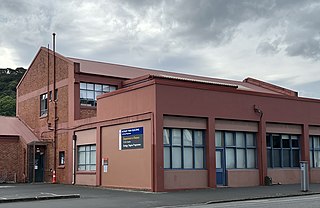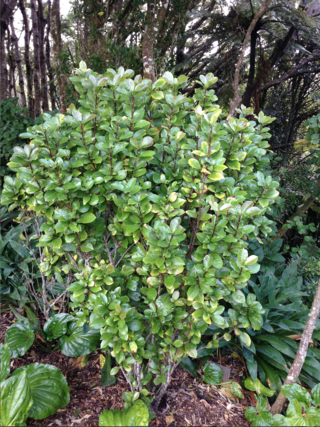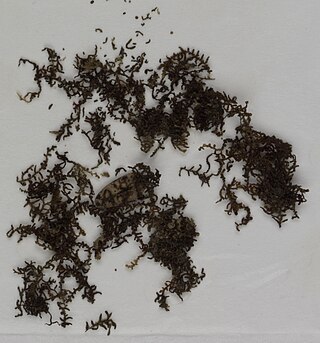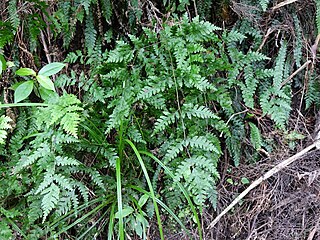
Libertia is a genus of monocotyledonous plants in the family Iridaceae, first described as a genus in 1824. It is native to South America, Australia, New Guinea, and New Zealand. Eight species are endemic to New Zealand.
Victor Dmitrievich Zotov was a New Zealand botanist.

Orocrambus flexuosellus is a species of moth in the family Crambidae. It was first described by Edward Doubleday in 1843. O. flexuosellus is endemic to New Zealand. It has been recorded from the North Island, South Island and the Stewart Islands. The species' habitat consists of lowland to alpine grasslands.

Lucy May Cranwell was a New Zealand botanist responsible for groundbreaking work in palynology. Cranwell was appointed curator of botany at Auckland Museum in 1929, when she was 21 years old. As well as her work on ancient pollen samples she was responsible for encouraging a love of botany in a generation of Auckland children.
Ruth Mason was a New Zealand botanist specialising in the taxonomy and ecology of freshwater plants. She was employed at the Department of Scientific and Industrial Research for 35 years undertaking research into aquatic plants, pioneering new techniques for plant preservation and collecting over 13,000 plant specimens in the field. She was awarded life membership by the New Zealand Ecological Society.

Melicytus lanceolatus, commonly called narrow-leaved māhoe or māhoe-wao, is a small tree in the family Violaceae that is endemic to New Zealand.
Peter Brian Heenan is a New Zealand botanist.

David John Galloway, FRSNZ was a biochemist, botanist, and lichenologist.

The Otago Regional Herbarium is a herbarium based at the University of Otago, in Dunedin, in the South Island of New Zealand. It has the herbarium code OTA. It has 72,000 items, making it the second largest herbarium in the South Island.
Brenda Faulkner Shore was a New Zealand botanist who attained the rank of Associate Professor before she retired in 1983.

Alseuosmia quercifolia, commonly known as oak-leaved toropapa, toropapa, and karapapa (Māori), is a species of plant in the family Alseuosmiaceae. It grows as a shrub, reaching a height of 2.5 m, and has variably shaped glossy green leaves. Flowering begins in spring, producing fragrant pink flowers which become red berries in Autumn. Endemic to New Zealand, it is found only in the upper half of the North Island - predominately in the Waikato region.

Xanthoparmelia semiviridis, also known as resurrection lichen is a foliose lichen species in the family Parmeliaceae. Its common name comes from the reaction of a dry sample to moisture. In its dry state it appears like curled-up dry leaf litter on the ground, but after rainfall the lichen will quickly recover, unfurl and become darker in colour. It is found in semi-arid areas across southern Australia and the South Island of New Zealand. The species is in decline in New Zealand because of the loss of habitat resulting from the establishment of dairy farms and vineyards in former indigenous habitat, and the deterioration of existing habitat caused by invasive species such as hawkweeds.

Veronica bishopiana, the Waitākere rock koromiko, is a flowering plant belonging to the family Plantaginaceae. It is native to West Auckland in New Zealand, and was first described by Donald Petrie in 1926.

Patrick John Brownsey was a British-born New Zealand botanist who specialised in the systematics of New Zealand ferns, and was for 44 years curator of botany at the National Museum of New Zealand and Te Papa.
John E. Braggins is a New Zealand botanist and bryologist, known for his research into ferns and liverworts. Braggins lectured at the University of Auckland from 1969 until 2000, during which time he supervised and mentored a significant number of New Zealand botanists. During Braggins' career, he has taken part in the identification of 12 species and one suborder, many of which are endemic New Zealand liverworts.

Frullania hattorii is a species of liverwort in the order Porellales, native to Tasmania, Australia. The species was first described by Matt von Konrat and John E. Braggins in 2003.

Libertia mooreae is a species of flowering plant in the family Iridaceae. The plant was first described by Dan Blanchon, Brian Grant Murray and John E. Braggins in 2002, and is native to New Zealand.

Pteris carsei is a species of fern native to New Zealand, including the Kermadec Islands. Originally considered a subtype of Pteris comans, the species was first formally described by Patrick Brownsey and John E. Braggins in 2020.

Kunzea sinclairii, also known as the Great Barrier Island kānuka, is a flowering plant in the myrtle family, Myrtaceae and is endemic to Great Barrier Island in the Auckland Region, New Zealand.

Festuca luciarum is a species of grass in the family Poaceae. It is endemic to New Zealand, found in the eastern North Island at higher altitudes.















